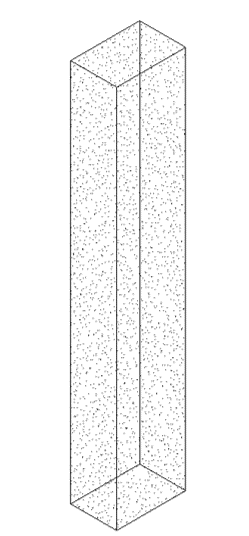
Table of Contents
LOD is a critical concept in the construction and architecture industry. It provides a standardized framework for defining the level of detail and accuracy of information in Building Information Modeling (BIM). The evolution of Level Of Development, from LOD 100 to LOD 500, has significantly impacted the way construction projects are executed. In this blog, we’ll delve into the details of how LOD has evolved, what each level represents, and the implications for the industry.
Understanding Level of Development
Before we dive into the evolution of LOD, it’s important to understand what LOD BIM means. LOD defines the degree of completeness and detail of a BIM model at various stages of a project. It ensures that all stakeholders have a clear understanding of what to expect at each phase, minimizing misunderstandings and errors.

LOD 100: Conceptual Design
LOD 100 represents the early stages of a construction project. It’s all about the big picture. At this level, the model is rudimentary, mainly serving as a placeholder for the conceptual design. It outlines the basic shape and size of the building or structure, allowing stakeholders to visualize the project’s scope.
Key Characteristics:
- Basic geometry
- No specific details
- Preliminary design
LOD 100 serves as a starting point for initial discussions and decisions, enabling stakeholders to agree on the project’s direction and feasibility.

LOD 200: Schematic Design
Moving beyond the conceptual stage, LOD 200 introduces more details and specificity into the model. This level is particularly useful for architects and designers as it refines the project’s design and begins to incorporate key components.
Key Characteristics:
- Specific components
- Basic location and sizing
- General layout
LOD 200 allows stakeholders to further refine the project and make more informed decisions. It’s often used to identify design conflicts and ensure that the project aligns with the client’s requirements.



LOD 300: Detailed Design
As the project progresses, LOD 300 takes it a step further by providing a highly detailed model. This level is crucial for engineers and contractors as it offers a comprehensive understanding of the project’s specifics, allowing for better cost estimates, scheduling, and planning.
Key Characteristics:
- Precise dimensions
- Detailed components
- Accurate layouts
LOD 300 serves as a valuable tool for coordinating different aspects of the project and identifying potential issues early on. It ensures that everyone is on the same page when it comes to the project’s intricacies.

LOD 400: Fabrication and Assembly
LOD 400 shifts the focus from design to fabrication and assembly. This level is predominantly used by manufacturers, suppliers, and contractors to generate shop drawings and fabricate building components.
Key Characteristics:
- Fabrication-ready details
- Specific product data
- Component information
LOD 400 minimizes errors during the construction phase by providing a highly detailed model that can be used for manufacturing and assembly processes

LOD 500: As-Built and Operation
The final stage in the LOD evolution, LOD 500, represents the as-built condition of the project. This level captures all the data necessary for facility management, maintenance, and operation post-construction.
Key Characteristics:
- As-built data
- O&M (Operation and Maintenance) information
- Real-world condition
LOD 500 facilitates the transition from construction to operation. It equips facility managers with all the information needed to efficiently maintain the building and its systems.
Implications and Benefits
The evolution of LOD has had significant implications for the construction industry:
Improved Collaboration: LOD ensures that all stakeholders, from architects to facility managers, have a common understanding of the project’s status at any given point. This fosters collaboration and reduces misunderstandings.
Cost Savings: The use of LOD minimizes errors and design conflicts, leading to cost savings by avoiding rework and change orders.
Enhanced Efficiency: LOD streamlines the construction process by providing detailed information for each project phase. This results in smoother project execution and reduced construction time.
Quality Assurance: The precision and clarity of LOD models contribute to a higher quality product, meeting, or exceeding client expectation.
Conclusion
The evolution of Level Of Development, from LOD 100 to LOD 500, is a testament to the construction industry’s commitment to enhancing efficiency and quality. As BIM technology continues to advance, LOD will play a pivotal role in shaping the future of construction, providing a standardized framework for communication and decision-making at every stage of a project. Embracing LOD ensures that the construction industry can meet the challenges of the 21st century head-on, delivering innovative and sustainable buildings and infrastructure.
